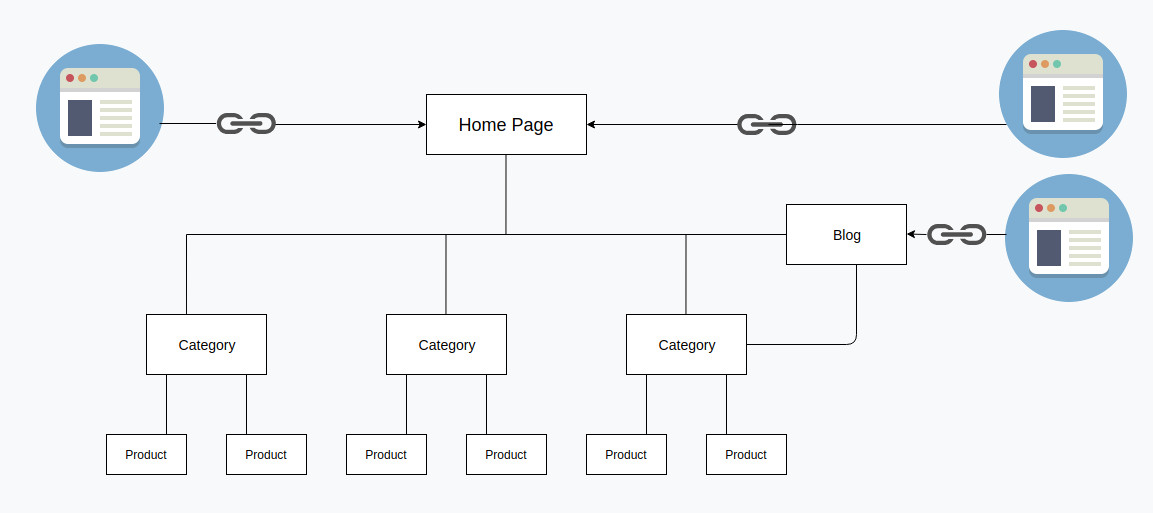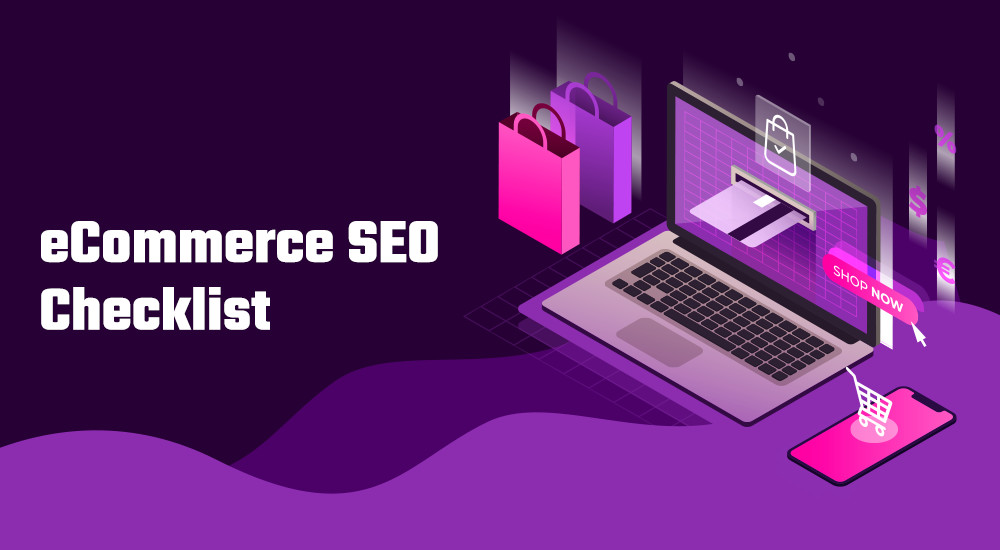
eCommerce SEO is time-consuming and challenging, we have created this ultimate eCommerce SEO checklist to follow step by step implementation guide to achieving the desired ranking.
In order to do next-level eCommerce SEO, you must have a beautifully designed online store for your business. Significant SEO strategies are implemented at the design stage and you must get your foundation right to get the top ranking. We are an eCommerce website design Melbourne agency and we are known for building next-level SEO-optimised e-commerce stores.
This comprehensive guide covers both on-page and off-page optimisation techniques which is applicable to a new website as well as an existing online store.
eCommerce SEO Checklist 2023
- Website Structure Optimisation
- Category Optimisation
- Product Planning
- Avoid Multi-Level Navigation
- Homepage Optimisation
- Creating Linkable Assets
- Storytelling – Infographics
- How-To Pages Videos
- Avoid Duplicate Content
- Avoid Thin Content
- Build Regular Content
- Canonical URL Management
- Internal Linking Strategy
- Keywords Planning
- Internal Links Anchor Text
- Mobile Consideration
- Website Speed
- Usability
- URL Planning
- Customer Reviews
- Image Optimisation
- Structured Data
- Custom vs Auto Meta Tags
- Avoid Redirect Chain
- HTTPS
- Powerful Search Functionality
- Ads Data to SEO
- Change Flexibility
- Strong Data Analytics Planning
- Easy Checkout Process
- Onsite is the Backbone of Offsite
- Avoid Poor Linkbuilding
- Promote Content
- Guest Post
- Link Outreach
- Deal Promotion
- SEO Tools Alert Notification
- Competition Link Profile
- Reputation Management
- Building Brand
- Invite Bloggers
- Video SEO
- Customer Engagement
- Relevance Is Key
- Diverse Anchor Text
Onsite eCommerce SEO Guide
Website Structure Optimisation
Website structure simply refers to the way you organise the web pages of your website.
Organised website structure eases and simplifies the navigation process and increases the efficiency of site crawlability. Which directly prevents the possible causes of duplication of your own content (similar category pages).
Also, an easy-to-use and optimised website structure improve the user experience leading to a reduction in bounce rates.
That, in turn, increases the SEO value of the pages and creates higher chances for the page to rank on Google SERPs.
So it is critical to get the eCommerce website structure planned before starting the website design and programming. Make sure to invest in a quality website structure since it is the foundation.
Some of the most important factors that should be taken into consideration while building the architecture of your website include product categorisation, the hierarchy of pages, internal linking, keywords, navigation etc. along with paramount importance to SEO.
You should have a clear objective and milestone set right at the planning stage and as the design process will progress along with SEO implementation. With a better website structure, you can expect a better return over time.
Nowadays you have loads of various options regarding eCommerce platforms like Magento, Shopify, etc. So choosing the right eCommerce platform best suited to your business is key for long-term success.
A well-planned website architecture will not help you with ranking & ease of use but also with site migration in future if needed, check out our website migration checklist to learn more.
Even if you are wondering how to start a dropshipping business in Australia fast, there are no shortcuts, you should consider having a good website architecture.
Category Optimisation
Category pages are the heart of an eCommerce system and play a great role in website information architecture. eCommerce category optimisation is integral to the entire eCommerce SEO strategy.
In an eCommerce website, most of the rankings are on category pages. In other words, category pages bring in the highest website traffic.
So, you must get it right and ensure that each category page can reap the maximum benefits of SEO. And when a visitor is looking for a particular product, they find it in the right category.
To achieve maximum SEO benefits you must primarily consider proper planning of category page along with the following best practices:
- Focus on creating the best categories where you can accommodate your products easily.
- Make sure your categories are designed well and have rich content. Prevent thin category pages as they induce poor user experience which increases bounce rates and decreases CTR.
- Your category page must incorporate easy-to-use features with enhanced faceted navigation.
- Most importantly, have no index placed on certain pages if you do not want Google to crawl those·
- Make sure the category pages include terms with greater search volumes and traffic-generating keywords as per the user intent.
- Ensure that your pages have appropriate URL, heading, description, optimised product images etc.
- Prevent keyword cannibalisation at all costs.
- You should also focus on creating an effective internal linking strategy that is very powerful to rank category pages.
- And lastly, evaluate the performances of your category pages regularly and create necessary SEO-optimised subcategories based on product and competitor research.
Product Planning
Generally, product optimisation is ignored by many eCommerce businesses. If you offer limited products then you must pay attention to each product and make sure they are optimised to the fullest.
Some of the best practices that you must follow include:
- In product planning, the naming of products is important from an SEO standpoint since it is used in URL and SEO titles; which affects the rankings of the product pages.
- Make use of proper texts, media, images and other relevant information. Ensure that each product is well-versed with Informative and unique product descriptions, titles, snippets and H1 and H2 tags etc.
- While adding any product, it is important to have a unique meta title and description which will help the page show up in the search results. But make sure that they fall within the recommended meta title and description limit. Include main keywords in your page title.
- Also, include product reviews, as it can boost conversion if a good number of positive reviews are received.
Avoid Multi-Level Navigation
When too many navigation options are present on the site, visitors often get confused and find it really hard to reach their desired page.
Also, multi-level makes it complicated for small screens reducing the usability. Complicated navigation makes it harder for the users to utilise the website.
It creates confusion and failed attempts to navigate the menu which may lead to frustration and dissatisfaction. That leads to an enormous surge in bounce rates.
So navigation must be simple to gain indirect SEO benefits.
Incorporate large or mega menus like Amazon on your website. It reduces the chances of the menu collapsing and helps in smooth navigation.
In the worst case, if you need to use multi-level navigation for your eCommerce website then make it more usable by having a properly designed menu, don’t just show parent, child and sub-child.
Homepage Optimisation
The homepage is the place where most of the visitors land generally and get to know about the categories and products.
eCommerce homepage optimisation is critical for any eCommerce website. If you don’t have a well-optimised homepage then it will have a direct impact on the conversion.
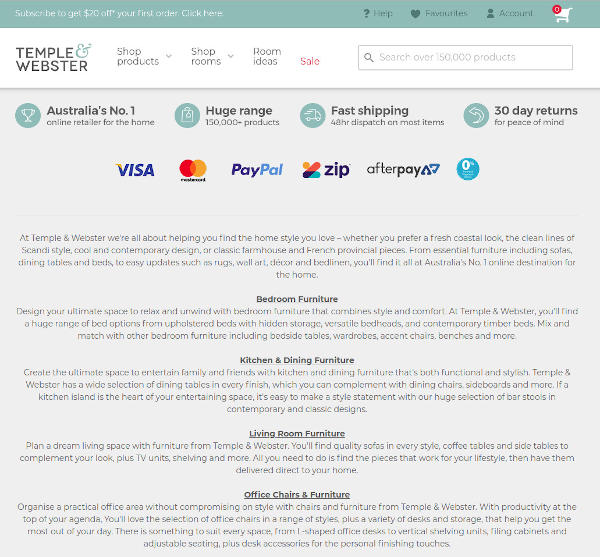
It gives them the context of what your business is about, and the products and services you sell. So homepage optimisation is necessary. All the elements must be well presented and organised to prevent any sort of confusion and frustration.
To provide and make all the information easily accessible to your users, focus on optimising the information about your company, page title and description, website logo, product images, contact information, offers or promotions regarding your products and services, Call to Action Buttons, etc.
You can also place some text in the body and add relevant internal links which will help you to rank your internal pages.
You may also try A/B testing to find out what works best.
Creating Linkable Assets
It requires a great deal of effort to create linkable assets but the long-term benefits are enormous. A linkable asset is basically coming up with ‘out-of-the-box ideas to create pages that have a higher possibility to get natural links.
Acquiring natural links for an eCommerce store is very challenging and this problem can be solved by building high-quality link-worthy content.
This is one of the most complex SEO tasks as you have to go beyond just competition analysis to understand your products and servers, along with your target audience and then plan link-worthy content.
Some of the actionable steps you can take to create linkable assets include:
- Create interactive, unique and detailed content that delivers SEO value regularly as per your target audience’s search intent.
- Incorporate an effective internal linking strategy and link to the most important pages you want to be ranked. Your content may include SEO-optimised videos, infographics, relevant images, guides etc.
- Create an eye-catching and interactive landing page that interests and lures your customers to buy your products or services you offer.
- Reach out to influential bloggers and vloggers in your niche and let them have their say, if they may love your content then you may have a chance to get natural links.
Storytelling – Infographics
These days SEO is not just about flat content. Since humans are visual creatures, a page with appealing and informative infographics definitely looks much richer and adds more value and weight to the website.
Infographics are visual contents that represent the data, statistics, text and images combined to solve specific problems. This is a great way to raise brand awareness.
An efficient infographics SEO strategy is a great growth hack for your business. It helps your content get more shares in the target market. And the more the shares the more the visibility. That would highly benefit you in receiving quality backlinks and establishing expertise and authority in the industry.
eCommerce SEO is one of the most challenging tasks to carry out mainly due to the range of categories which requires ranking and eCommerce infographics SEO strategy is one of the best ways to build quality content and pass the value to relevant categories using internal ranking.
How-To Pages & Videos
When your business deals with products that demand more specifications and knowledge about usage and handling, how-to pages should become an essential part of your website.
Also, a combination of how-to content along with videos is proven to be a great accelerator for your marketing campaign. They display your knowledge in the field and help you establish an authority in the market.
When you are in a very specific niche where how-to pages and videos may be searched more often, then you must consider building such content for your SEO strategy.
This effort will take you a step ahead with your SEO game and help you enormously boost your eCommerce sales.
Note: Your how-to pages and videos must avoid jargon as much as possible since most of the readers will be unaware and uninterested in the technicalities of the product.
Avoid Duplicate Content
eCommerce sites generally have tonnes of pages and if you do not pay attention, you may pile up a significant amount of duplicate content. Duplicate content or repetitive content not only has a poor user experience but is also a bad option for SEO.
Some common ways in which you may unknowingly develop duplicate content can be the occurrence of two or multiple URLs fetching the same content without a proper redirect or canonical URL.
eCommerce duplicate content is one of the major reasons for not achieving a higher ranking for key categories pages.
It is rare that repetitive content won’t get noticed. Search engines are smart enough to catch and rank you down if they find any duplicate content on your website.
You may also have to suffer a duplicate content penalty. That would cause you to experience a huge loss in revenue.
So you must avoid and prevent the occurrence of such contents at all costs.
If you find similar product or category pages then merge them into one unique piece of content. It is also important to note that poorly designed websites also generate duplicate content unknowingly.
Let us take an example.
- example.com
- example.com/index.html
- example.com/home
If all the three URLs return to the homepage then you will have a duplicate content issue; unless you are not using a canonical URL.
So, one of the best ways to deal with this problem is by having one URL for the homepage and other versions should redirect to the preferred URL using a 301 redirect.
Avoid Thin Content
One of the key SEO content strategies should be, to think before you act. Just creating random thin content doesn’t help you to do quality eCommerce SEO.
Thin eCommerce content is another reason for poor SEO performance and it also delays the indexing process. One of the major blockages nowadays to ranking your eCommerce website is poorly designed thin content pages which adds limited to no value to users and also to SEO.
You need to invest in research, planning and try to create content that will add more value to users. Google loves high-value-added content and so it is easy to rank them in the SERPs.
One of the best ways to find thin content on your website is by making a list of pages that get minimum to no impression and clicks.
You must delete any thin content or rewrite them if necessary following strong content production guidelines powered by a solid SEO strategy.
A more sophisticated way is to merge the thin contents (if they are similar) instead of deleting them and creating one piece of mother content.
Take advantage of SEO tools instead of going to each individual page especially if you deal with websites with tonnes of pages.
Build Regular Content
The production of regular and fresh content is important to leverage your efforts of SEO for an eCommerce website.
Fresh and relevant content adds value and weightage to your website. And a solid content development strategy can work wonders in raising your eCommerce SEO value.
Creating unique and original content regularly leads to an exponential rise in website traffic and helps you boost your eCommerce sales.
It also helps to increase the internal linking opportunities. This in turn sends google and other search engines signals of your content being worthy to rank on the first page of SERPs.
Your content may be in the form of blogs, web copy, articles, newsletters, web videos etc. Learn how to write SEO-friendly content to rank well online.
Moreover, it is not about the number of posts or pages you have but how customer-focused your content is what matters the most.
That’s why you must ensure that you have user-centric pages that answer most of the questions a customer might probably have regarding your product and services.
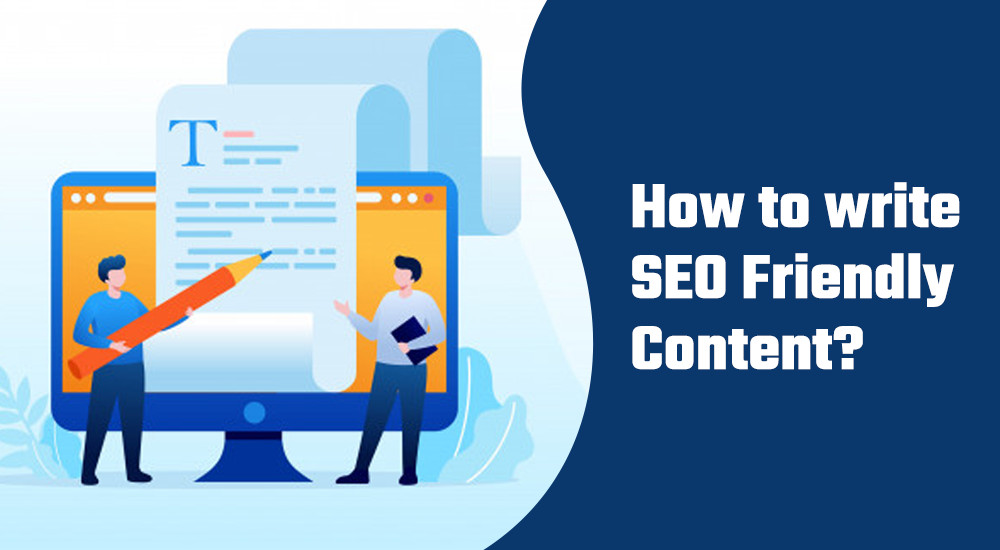
It’s advisable to get help from our SEO copywriter to produce error-proof, appealing and problem-solving pages for your website. Learn more about SEO copywriting prices and plan your budget.
Canonical URL Management
It is common for an e-commerce website to have the same product listed under different categories with different URLs. However, it can create cases of duplicate content for you which can lead to issues of google penalising your website. That can also lead to low site crawlability issues.
So you should avoid the same page getting accessed using multiple URLs with a canonical URL.
So using canonical tags is by far the best way to let Google know the preferred version of the URL. Canonicalisation of a page can be done by inserting a canonical link (rel=canonical) inside the head section of the HTML of a page.
Internal Linking Strategy
It is a powerful SEO strategy that should be considered at the time of website architecture planning much before design.
The strategy is all about organising, planning and optimising your pages by linking to relevant or rich content (content with higher backlinks) from one page to another under the same domain.
To achieve a greater SEO ranking for your eCommerce website, internal links can supply one of the most powerful signals to search engines about the importance of the page.
Make sure your internal links are relevant and well balanced. There should be a strategy in place for building a quality eCommerce internal linking strategy.
Keywords Planning
Keywords research and planning is an important step in eCommerce SEO. Proper keyword research gives you the exact data regarding the words that your target audience is already looking for.
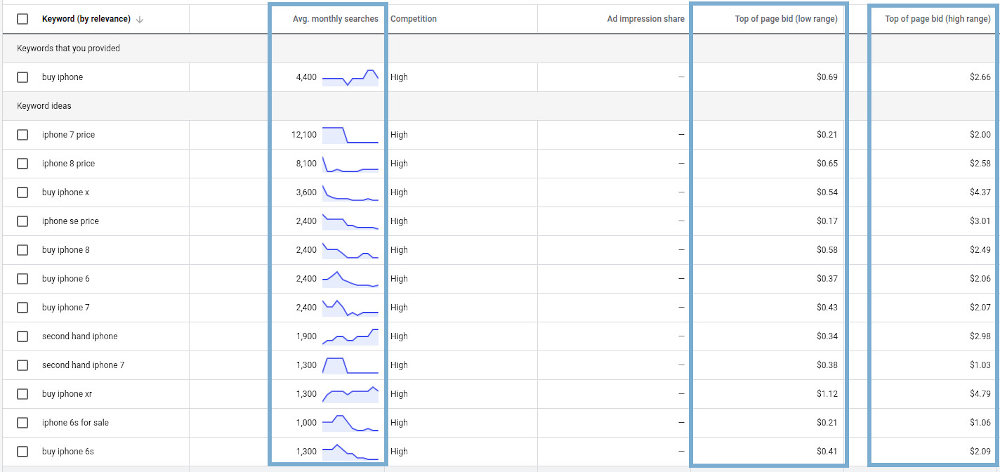
Moreover, efficient keywords planning is proven to be one of the most excellent ways to increase the conversion rates as well as the ranking on the first page of organic search results of Google.
You can use the Google keyword planner tool to get keyword ideas based on the search intent of the user. And incorporate those keywords in your page, meta title and description. However, avoid keyword cannibalisation
Apart from that, make sure to pay special attention to keywords planning for your homepage and category pages.
Internal Links Anchor Text
As website content and internal linking are an essential part of on-page SEO for an eCommerce website, the use of keywords needs to be wise and effective.
It’s good to have direct or partial match keywords as anchor text for internal linking. It will have a positive influence on the SEO value and the CTR (click-through rate) of the web pages.
It is worth keeping track of your anchor text to focus more on the main and some secondary keywords anchor text.
Mobile Consideration
You must consider mobile device optimisation as it highly impacts conversion and SEO.
The importance of the mobile version of the site cannot be ignored. Today users not only use mobile to make searches but they also make complete purchases through it.
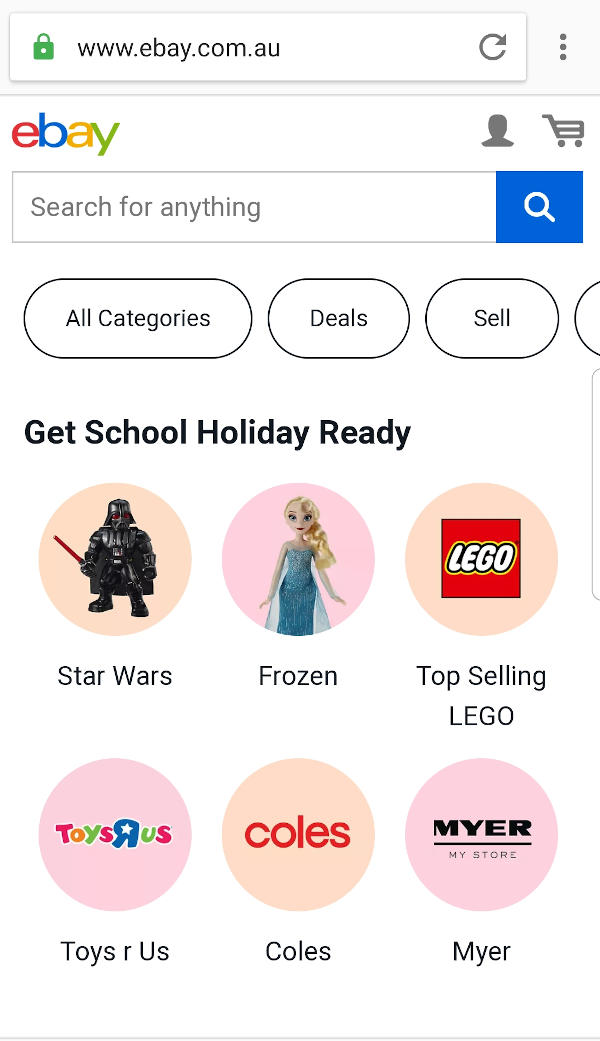
Building a responsive website that works well on desktop, mobile and tablet is one of the best ways to deal with device optimisation issues. You must fix the issues regarding small text, the closeness of clickable elements etc. as a part of the enhancement of usability to boost mobile optimisation.
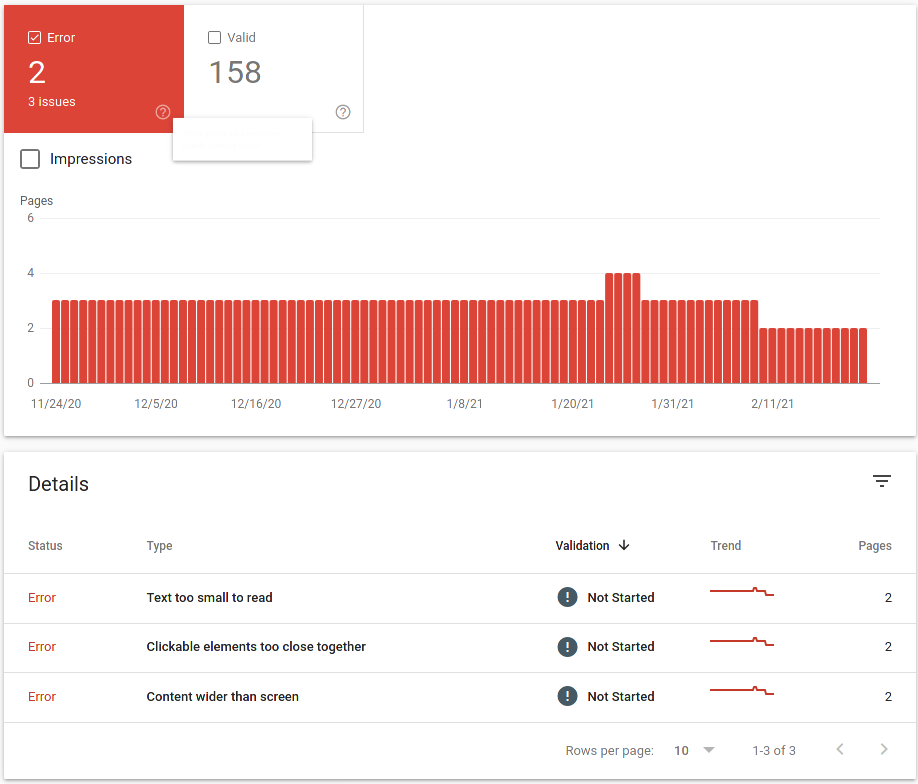
Other than that, the crucial factors that you must consider as a part of your mobile optimisation process include:
- A well-designed page that fits perfectly on mobile as well as desktop.
- A fast loading website speed.
- Properly optimised images of products for SEO and conversions
- Display of the content that is important for the user on the top.
Next Level Mobile Consideration
Having a standard mobile optimised eCommerce website is the list you should do to have a good user experience.
But if you need to take your eCommerce SEO effort to the next level then you will have to optimise find details of mobile display along with speed to ensure you have the best outcome.
Website Speed
No one likes a slow website. Any customer who finds a website slow tends to go back to Google and browse the competition websites that have comparatively fast loading speed and better usability.
In general, a page that takes more than 3 to 5 seconds to load is bound to experience downturns in the conversions to a great degree.
That negatively impacts user experience as well as eCommerce SEO resulting in a huge surge in bounce rates.

So you can see that you cannot afford to have a slow website.
Some of the best practices you can follow to increase your eCommerce website speed include:
- Build the website with greater mobile consideration.
- Have decent quality hosting and ensure you have a good response time.
- Technology changes with speed, and hence apply relevant changes as per the new guidelines.
- Pay special attention to HTML/CSS/JS and media size which impacts the load time.
- Use a proper CDN.
- Avoid multiple or chain redirects which also have a negative impact on SEO.
Website speed optimisation is not an easy task and executing it alone may leave behind loopholes. So it is advisable to take assistance from an experienced website design professional and technical SEO consultant.
Usability
Making your visitors happy and satisfied through efficient usability is the key to a high-converting eCommerce site.
A site that allows super-quick and easy navigation with a smooth checkout process tend to attract consumers and also retain them in the long run.
But don’t confuse usability with pretty or attractive website design. Usability is simply about solving a user’s problem to help them find what they might be looking for in a minimum amount of time.
A few basic steps that you can undertake to enhance your site usability are as follows:
- Keep a functional, intuitive and simple navigation structure.
- Pay attention to the target age group, and use the colour scheme accordingly.
- Avoid distractions, and keep the action items simple and easy to use.
- Allow fast checkout where possible along with other options like guest checkout.
- Provide website search functionality so that customers can easily type in their required products in the search bar.
URL Planning
Although a small part of eCommerce SEO, URL planning still impacts your SEO value and it also demonstrates how the site structure has been planned.
Properly refined URLs give a clear indication to users regarding what the content of the site is about. So for an effective user experience, it is essential to optimise your URL.
Here are things you can consider while eCommerce URL planning:
- Make your URL short and descriptive for your categories.
- Some URLs may be a bit longer like products URL which can have a name, brand, colour etc.
- URL planning should also be driven by keyword research and planning.
- Always keep your URLs in lowercase.
- Avoid numbers if possible.
- Separate words with dashes to frame SEO-friendly URLs.
Note: Avoid multi-level complicated URL structure. Since changes may be required in the future, you should have a system that accepts changes and redirections can be applied with ease.
Customer Reviews
In general, people want to know if the products they’re considering fit their needs. So they are more inclined to read the customer reviews before buying.
If a product has no reviews then it is less likely for the person to buy the product. Thus customer reviews help you build trust and confidence in the users regarding the products
Genuine and authentic reviews have a positive impact on SEO too.
More and frequent reviews catalyse the process of conversion rate by bringing in floods of traffic and thus increasing your sales.
If you offer amazing products and services then ask your customers to write a review of your products and display them in SERPs. You can ask for reviews by emailing the customer after receiving the product.
You may ask them if the product was up to their expectations or what else can the product have for betterment.
Also, provide discount offers like unlock coupon codes and other similar offers after the complete review as a reward to the customer. That helps in building a healthy relationship with your customer.
The review count can also be featured in Google search snippets which is a huge CTR factor.
Image Optimisation
Since online stores are generally flooded with images, you must pay special attention to the eCommerce SEO image optimisation of your products for a smooth user experience.
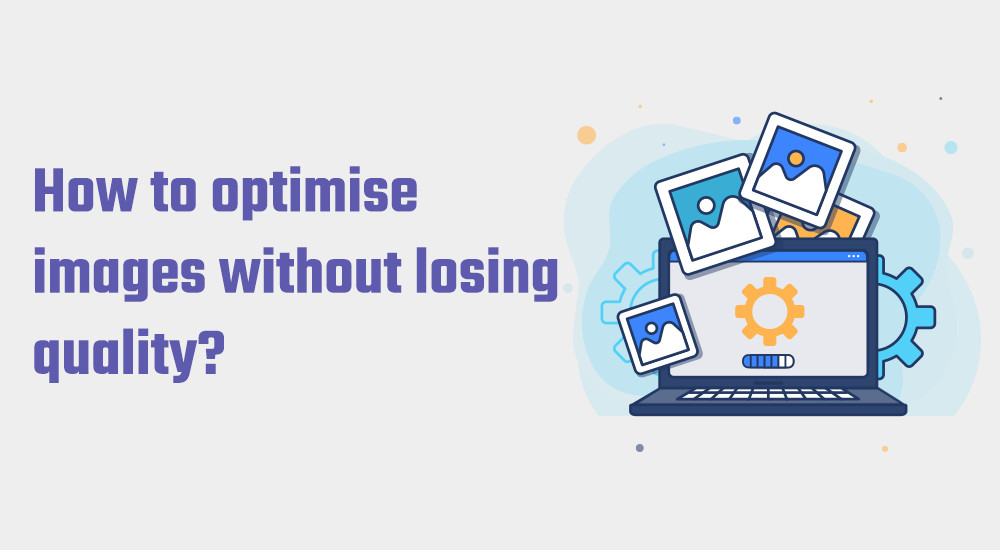
Properly optimised images reduce the time taken to load a website page and as such reduced the bounce rates. That in turn helps in the raking of your page on the first page of Google search.
So, ensure the optimisation of images is done in the right dimension and size without compromising the quality.
Name and describe the images correctly, and also have relevant ALT tags added to them.
Structured Data
Structured data are an amazing way to display a rich and powerful listing in SERPs.
Ecommerce websites have large variations in the products and contents. That makes it difficult for the search engine to determine the accurate context of the pages.
Structured data allows you to feature key data like price, reviews, and FAQs. It boosts your website CTR and also helps you improve the engagements and the organic listings.
Structured data are the rich snippets, JSON tags or schema tags that you place on your eCommerce website to display key data.
Custom vs Auto Meta Tags
Custom meta tags are always good for SEO. If you offer tonnes of products then you may consider the automation of your product pages.
Try to keep your meta title and description unique. And optimise using relevant keywords.
You can also automate the meta title and description for your products.
Example of meta title for products:
Buy <<Product Name>> | <<Any feature or secondary keyword>>

Use the meta title length checker to ensure you have compiled the best meta title and description for your page.
Avoid Redirect Chain
A redirect chain has a negative impact on your eCommerce SEO effort.
It is formed when there happen to be too many redirects between the initial and the destination URL. You may experience google not indexing your website. That’s because google stops following redirects after certain hops to preserve its crawling resources.
This directly impacts the crawl of the pages causing a decrease in traffic. Apart from that, your website would also suffer from a loss in link equity, slow loading speed etc.
So it is important to audit your present redirects regularly. If you have redirect placed for pages then avoid chain redirect and make them 301 redirect from A to B.
Example:
- A: example.com/seo
- B: example.com/seo-company
- C: example.com/seo-agency-location
If you had URL changes over time from A to B and then B to C for the same page then do the following which is also demonstrated in the image below.
- Redirect A to C
- Redirect B to C

HTTPS
HTTPS is a small signal for SEO that generally indicates that the website is secured. Google displays a warning to visitors saying the website is not secure which can have a negative impact on the click-through rate of an eCommerce scythe without HTTPS.
Importantly, while making online transactions, it’s best to have proper security in place to avoid man in the middle attack.
HTTPS encrypts the data and prevents any sort of internet theft issues as well as prevents customers from falling into the trap of imposter websites.
It keeps the valuable information such as credit card details, login ids etc. of the customers safe and secure. This way the transaction is done by the right person and prevents identity fraud.
So ensure that you have HTTPS for your eCommerce site.
Get the right level of SSL certificate for your website.
Powerful Search Functionality
Effective search functionality helps users to experience an easy navigation process while skimming throughout the website. And also allows you to monitor the search pattern to boost SEO coverage and ranking.
As such it directly influences the user experience and benefits your eCommerce conversion.
Some of the ways in which you can improve search functionality are as follows-
- Having GET requests with your search programming will allow tools like Google Analytics to capture the phrases users may type to search for specific products.
- This will give direct learning of customer behaviour.
- Over time data analysis can be performed to create actionable items.
- A responsive search is even better which will save users time. Enhancing your site search system to be highly responsive to semantic searches to dramatically load search results.
Ads Data to SEO
Google Ads or other paid advertising offers a huge amount of data. Ads data insights can be used for SEO to boost coverage.
It not only helps you to elevate brand awareness but also generates enormous eCommerce sales.
But you need to have a well-planned and efficient ROI-generating AdWords strategy if you want to establish and upscale your online presence and take your business to great heights.
And carrying out an Adwords strategy with expert assistance would help you generate maximum benefits for your eCommerce SEO.
Get help from an expert Google Ads consultant to run an effective Ads campaign and take the learning to the SEO side.
Change Flexibility
To empower your eCommerce business in the digital world, you need to adopt a flexible eCommerce strategy.
A flexible eCommerce strategy primarily helps to build a strong base in terms of changes in design, pricing, shipping, innovation etc and provides customers exactly what they want whenever necessary and without any disappointment.
So focus on building a system that can be changed easily to enhance the user experience & SEO right from the start of planning your site.
Moreover, since the world of eCommerce is experiencing fast changes you must always update and keep in check your company’s value proposition from time to time.
Make sure to regularly conduct strategic customer research. to keep up with the consumer demand shifts, etc.
Strong Data Analytics Planning
You must invest in data if you would like to grow your business. It will not only help SEO but also has an impact on your business decisions.
But it’s not just about acquiring data using Google Analytics or other tools. It’s more about processing those data and building insights and then actionable items to meet the consumer demand and the shifts in the market trends to make smart business decisions.
Some of the benefits you can enjoy from eCommerce analytics are:
- SEO is never a set and-forget game, especially in a competitive industry, you should invest in digital analytics to keep up and stay against the competition.
- Creative SEO is purely driven by data and metrics.
Easy Checkout Process
Shopping is a great time for buyers but dealing with the checkout process is really tiresome. Consumers demand an easy and hassle-free checkout.
Make the purchase experience as smooth as possible by following the best practices to elevate the user experience. Because a great user experience reduces the bounce rate and boosts the effectiveness of your eCommerce SEO campaign.
Offsite eCommerce SEO Checklist
Onsite is Backbone of Offsite
Before investing in any off-site SEO elements, it is critical that you invest in on-site eCommerce SEO first. It is the foundation of off-site SEO.
On the contrary, the main basis of offsite SEO is acquiring links also called backlinks from high-quality sites to establish your brand reputation and build authority.
But if you did not undergo good onsite SEO optimisation such as not investing in building linkable assets, or ignoring the aspects of good vs bad SEO, then off-site SEO won’t be of much help.
To be more exact, you won’t even be able to acquire quality and relevant backlinks. As such getting a higher rank on Google SERPs is out of the question.
So leverage your on-site SEO game at first and off-site optimisation will follow with greater effectiveness.
Avoid Poor Linkbuilding
Many businesses forget the importance of quality link building and suffer badly. Link Building strategy is all about quality and not quantity and poor link building can harm your website in no time.
So it’s not worth following bad link-building practices like purchasing links or submitting to poor directories or building average content on web 2.0 without planning.
Remember that links that belong to relevant niches along with good domains are only going to benefit you. Links should be on quality and authoritative domains with proper use of anchor text.
Just having multiple links on various domains with no relevance may have a negative SEO impact.
You may face a sudden ranking drop due to the presence of irrelevant links to your content which is definitely not good for your business growth.
So not only should you avoid poor link building but also take necessary actions in case you find irrelevant backlinks to your website.
Promote Content
It’s crucial to promote your content on various channels to improve your brand identity and acquire high-quality links.
The first step is to create good quality, shareable and linkable content that people would like to engage with.
Promoting content means you can make your content popular in a minimum amount of time.
Some of the legit ways in which you can consider promoting your content are as follows:
- Send email newsletters to your target audience.
- Share your content on the right social media channel.
- LinkedIn is one of the best platforms to share content to the right audience.
- Photos speak a thousand words, use the right banner when you share your content online.
- Collaborate with other businesses that have the same target market and cross-market. Such type of marketing would help both the brands to achieve a good amount of relevant audience.
Guest Post
Guest Post is still a hot trend with lots of SEO benefits.
Tonnes of strategies go behind the guest posts link acquisition process.
If your domain is a new one then you need to be mindful of the number of links you may acquire at a specific time.
However, building a gradual guest post has a good SEO impact.
Important: Build links to your linkable assets, and avoid getting links directly to your products or services pages.
Through guest posting, you get a chance to build a good portfolio and as you continue sharing your knowledge and provide reliable information, you start to get positioned as an expert in front of the target market and potential customers.
That is a great boost to your link-building strategy as more and more people start linking to your content. Which sets up your brand identity and accelerates your brand awareness.
As such there will be a gradual surge in the traffic to your website elevating your lead generation.
Note:
- Your content must provide an actionable read with lots of information and real concern.
- Avoid footer links as it appears spammy.
Link Outreach
This is one of the most difficult tasks to do but if you have a network of connections then link outreach becomes a very effective strategy for eCommerce SEO.
eCommerce businesses can create link outreach by various methods that are as follows:
Influencer outreach: It is a powerful link outreach strategy where you come in contact with several influencers in the industry to market your products and increase brand awareness.
Email outreach: Here you reach out to people via email to request them to link to your content.
Press outreach: The main focus of PR outreach is to achieve press coverage and website mentions of your brand to increase exposure by pitching the know-how of your products to journalists, bloggers etc.
Social media outreach: Here you utilise various social media platforms like Instagram, Twitter or Facebook to strategically improve brand awareness by building a large network and promoting your content.
Note: You shouldn’t sound desperate while letting people know about how amazing content you have on your website. And if they like it then they may link to your blog.
Deal Promotion
Offering special discounts from time to time and featuring them on deal sites is a smart way to promote your eCommerce deals online.
It can get your website tonnes of referral traffic and increase sales.
Such sites are a great place to market your business as they help in promoting your products faster.
As such it gets easy to target local audiences and bring in new customers to your website in a short period of time as well as gain valuable reviews.
SEO Tools Alert Notification
The use of AI is tremendous these days. So why not take advantage of it for your website SEO too. There are many SEO tools out there that help you get notified of the changes in your website.
These tools alert you for SEO and tech-related issues like 404, any virus on your website, ranking changes, duplicate content and duplicate meta tags etc.
These tools make it a lot easier for you to manage your website while focusing on other aspects of your business.
There are many SEO tools like Google Search Console, SEMRush you can use for your business. You can subscribe to any one of the tools and remain updated with any tips or errors on your website.
Competition Link Profile
Don’t just do what your competition has done. Analyse your competitor’s backlink profile and keep a note of the strengths and weaknesses of their profile. And strategically make yours better for maximum benefits.
Invest in doing market research and competition analysis to see what has and hasn’t worked for your competition and make a record of all that is required to compete against them.
Once you get a proper analysis, start to create better content with a stronger digital strategy and go bigger and better than what is already available in the target market.
Reputation Management
Monitoring brand reputation, eyeing what everyone is talking about your business and how to positively process the reviews is essential for reputation management.
You may achieve a great ranking but if you don’t have a good reputation then your conversions will be affected.
Moreover, the more the brand name is mentioned by the public in a good light, the better it is for you from an SEO standpoint.
In case you face a hard time with reputation management, it is always best to invest and rely on an established and trustworthy online reputation management service.
Building Brand
Building a brand doesn’t happen overnight but investing in building the brand can have significant long-term business and SEO benefits.
Once people start to remember the brand then you would require less SEO effort as the possibility to acquire links naturally would be a lot higher.
Some of the steps you can take and consistently follow to increase your brand reputation in the long run include-
- Have a strong brand awareness campaign right from the get-go.
- Have a unique proposition about the product or service you offer and directly related to the brand.
- Maintain exceptional and satisfactory customer service and reply to every single review.
- Maintain a high level of transparency with your customers.
- You can’t build your brand if you struggle with online reputation management.
Invite Bloggers (Digital PR)
It is a well-proven fact that when powerful and influential people talk about your business and products, others take it seriously and value their words.
So if you can invite bloggers to do a review of your products as a part of your marketing campaign, it will be a great way to promote and build your brand.
Make sure to network and connect with bloggers and influencers and build a strong and reliable relationship with them. Also, ask them to write about your website products and services.
This increases the chances for you to acquire backlinks which in turn is a great deciding factor for your ranking in SERPs.
Video SEO
Video content has been gradually gaining in popularity and in recent times video is the new king. So if you are still not utilising the power of video marketing then you are missing out on a great deal of traffic and revenue.
Video content keeps a great potential to optimise your products and website since people are more aligned to video content than reading.
And it is particularly very effective for doing eCommerce video SEO since backlinks from video descriptions can add great value to SEO optimisation and boost your click-through rate with increased brand awareness.
Moreover the more you create video content the higher and faster you can generate website traffic.
But you should also keep in mind that your content must follow the best practices of video SEO optimisation to enjoy its benefits.
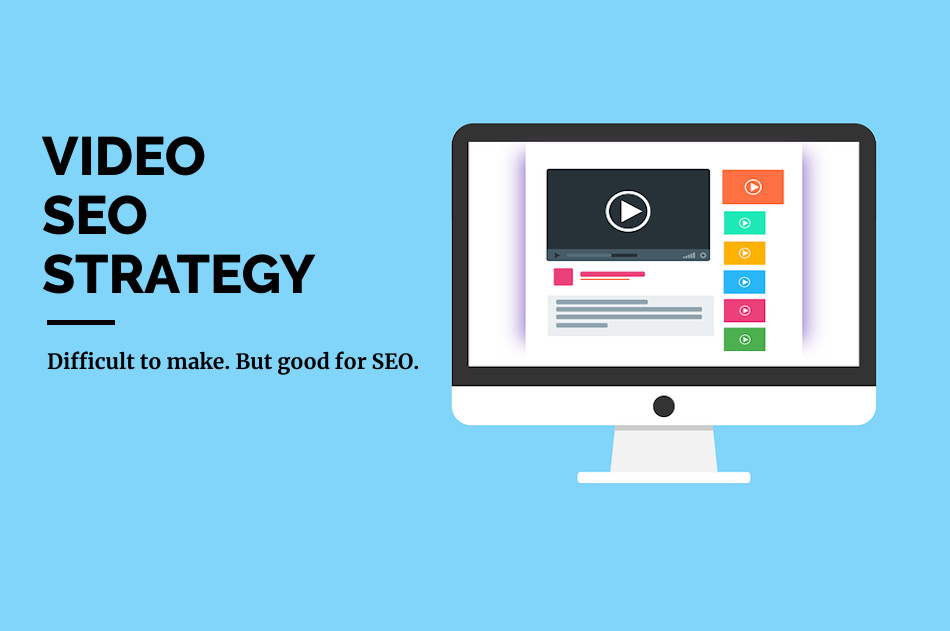
So take advantage of this tremendous opportunity to strategically build solution-oriented video content such as how-to videos, review videos, etc.
Customer Engagement
Build a customer engagement strategy to keep your customers engaged and active.
One of the ways to keep customers engaged is by maintaining positive interactions with them regularly over the phone or online. You must provide 24/7 live chat support to heed your customers’ needs
Customers feel highly acknowledged and satisfied to see when the brand responds to their queries online and develops a positive outlook on the brand.
So answering their queries and engaging with them all throughout their purchase journey is the most effective way to keep your customers interested and loyal for a long time.
Relevance Is Key
It is needless to mention that link building is the backbone of SEO. But getting links from just any site may not add value to your website. The relevancy of the links is extremely important.
Example:
If your website is about “dog food” then getting a link from pets training may be relevant which may be talking about the impact of food on pets behaviour or something similar.
So if you happen to receive irrelevant and spammy backlinks, make sure to remove them as soon as possible.
Diverse Anchor Text
Links come as a vote to your website. And sometimes in desperation to create too many links we often forget to use the variation of keywords necessary for backlinks. And this is exactly where the real problem occurs.
Anchor text is an important attribute when it comes to SEO. It gives Google an idea of the context and depth of the information provided in your website content. But most of the time we have no control over who links to us and the anchor text with which the link is made.
In general, there should not be too many links within one anchor text. It is critical to have a diverse anchor text with link building strategy.
Backlinks with the same anchor text featured at many places look spammy and may negatively affect the ranking of your site.
Remove spammy backlinks or reach out to the referring sites and ask for a change in anchor text or removal of the backlink. In the worst cases, you can disavow the backlinks.
Moreover, avoid poor link-building practices and focus more on building backlinks naturally.
If you focus more on building natural links then you will not have to worry about anchor text. And since different people think differently and you will have a diverse anchor text naturally.

Need SEO Consulting Service?
We are an eCommerce SEO agency based in Melbourne and we specialise in eCommerce, and Shopify SEO. We bring the WOW factor to an eCommerce SEO campaign we have produced the blog with real implementation experience. Enjoy the read and comment below.
This is the most updated SEO checklist for an eCommerce website created with real experience. Feel free to share and comment below.

